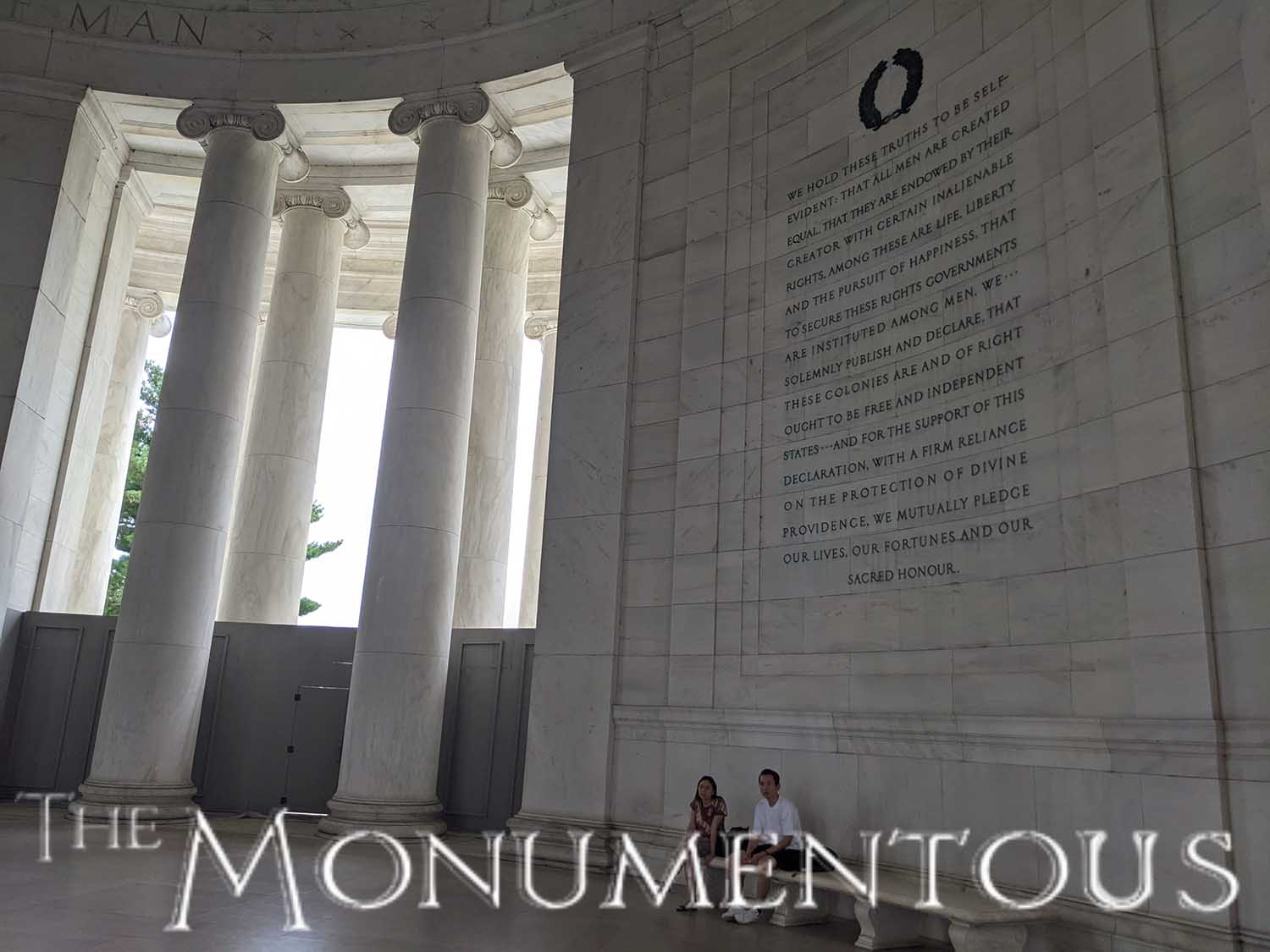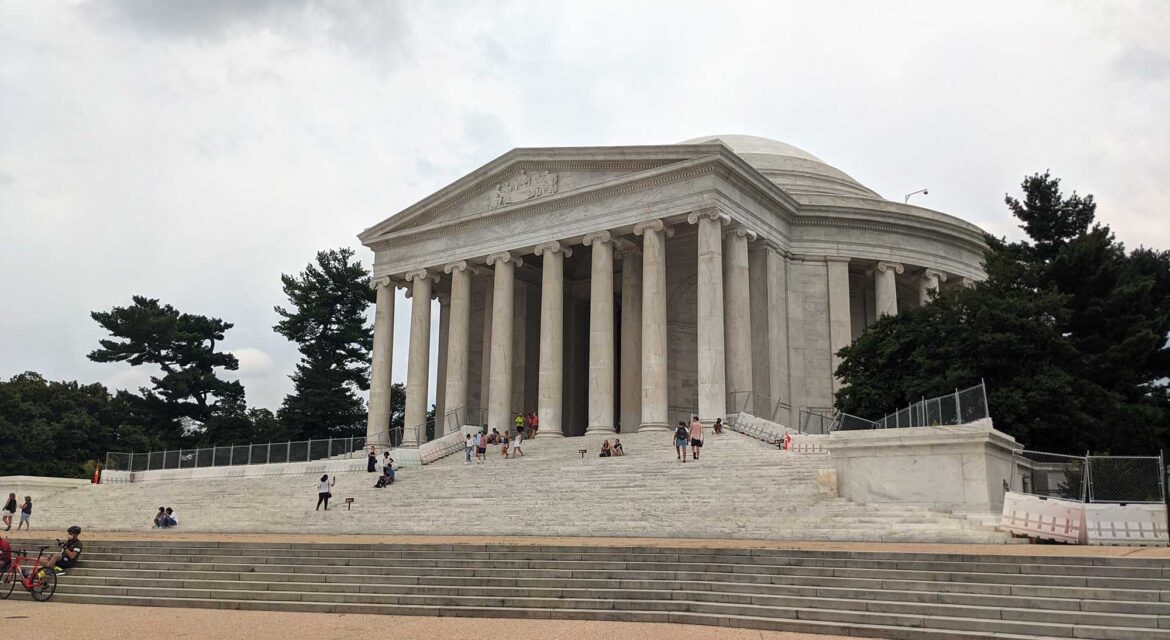 Dedicated to the third U.S. president and the author of the first draft of the Declaration of Independence, the Jefferson Memorial honors the legacy of Thomas Jefferson in obvious and subtle ways. Located on the National Mall’s Tidal Basin Washington D.C., the memorial is an incredible example of what it can mean for a landmark to convey a sense of power and permanence while simultaneously being connected to concepts and ideals that continually evolve.
Dedicated to the third U.S. president and the author of the first draft of the Declaration of Independence, the Jefferson Memorial honors the legacy of Thomas Jefferson in obvious and subtle ways. Located on the National Mall’s Tidal Basin Washington D.C., the memorial is an incredible example of what it can mean for a landmark to convey a sense of power and permanence while simultaneously being connected to concepts and ideals that continually evolve.

Defining the Southern “Compass Point” of Washington D.C.’s Monumental Core
 As the principal author of the United States Declaration of Independence, Thomas Jefferson is one of the more notable Founding Fathers. The third President of the United States, he was a spokesman for democracy and a powerful advocate of liberty, although he also owned over 600 slaves throughout the course of his life. After retiring from public office, Jefferson founded the University of Virginia and died in 1826.
As the principal author of the United States Declaration of Independence, Thomas Jefferson is one of the more notable Founding Fathers. The third President of the United States, he was a spokesman for democracy and a powerful advocate of liberty, although he also owned over 600 slaves throughout the course of his life. After retiring from public office, Jefferson founded the University of Virginia and died in 1826.
In the early 20th century, space for a high-profile memorial was created directly south of the White House on land that was reclaimed from the Potomac River. After determining that a monument dedicated to Jefferson would serve as the southern “compass point” of a larger plan to define Washington’s monumental core, the Thomas Jefferson Memorial Commission was formed in 1934. The committee selected John Russell Pope as the architect for the memorial.
Construction on the circular, open-air memorial neoclassical building began in 1939. The building was designed to be a very large Pantheon-like structure and to Jefferson’s own design for the rotunda at the University of Virginia. The dome, 54 Ionic columns that surround the building and eight Ionic columns at the main entrance portico define this neoclassical design. Dedicated on the 200th anniversary of Jefferson’s birthday in 1943, the interior of the structure features a large bronze statue of Jefferson that was not added until 1947. Much of this history is detailed in markers located around the monument.
Surrounded by water, the structure is located on the National Mall’s Tidal Basin, a large body of water that is bordered by DC’s famous cherry blossom trees. The structure would peacefully co-exist with the spring-blooming cherry orchard flanking and abutting it, enabling it to form a connection with the space and with audiences that continues to resonate with each.

Experiencing the Monumentous
 Situated on 18 acres and serving as the southern terminus of the north-south axis that includes the White House and the Washington Monument, the Jefferson Memorial has been able to fully realize a vision to honor and celebrate the nation all across the capital city. It has been more fully realized thanks to the experiences that audiences can have with and around it.
Situated on 18 acres and serving as the southern terminus of the north-south axis that includes the White House and the Washington Monument, the Jefferson Memorial has been able to fully realize a vision to honor and celebrate the nation all across the capital city. It has been more fully realized thanks to the experiences that audiences can have with and around it.
Four quotation blocks drawn from several of Jefferson’s writings are carved into the walls of the memorial chamber. They highlight his personal credo and illustrate some of the principles to which he dedicated his life.
The statue of Thomas Jefferson dominates the interior. The piece is 19 feet in height and stands on a 6 foot granite pedestal, which is inscribed with the dates of Jefferson’s birth and death. Jefferson is depicted in midlife, wearing a waistcoat, knee breeches, and a long, fur-collared coat. In his left hand, he holds what is believed to be the Declaration of Independence.
The Thomas Jefferson Memorial store offers books about Thomas Jefferson and the American Colonial, Revolutionary War, and Early Republic periods. Various other products like patches, coins and toys that are associated with Jefferson are also for sale.
Ranked near the top on the “List of America’s Favorite Architecture” by the American Institute of Architects, it was listed on the National Register of Historic Places in 1966 and defines nearly every map of Washington D.C. It showcases how a monument that connects to a larger legacy can capture the interest and attention of audiences across the eras in ways that further define those legacies.
An Evolving Legacy
 The incredible scale and scope of the Jefferson Memorial is a testament to the personal and nation legacy that Thomas Jefferson has come to represent, both of which continue to evolve. How the physical monument will similarly evolve is something audiences in the present continue to explore, highlighting how such structures, regardless of their size, can be connected to the past and future of a space, city and nation.
The incredible scale and scope of the Jefferson Memorial is a testament to the personal and nation legacy that Thomas Jefferson has come to represent, both of which continue to evolve. How the physical monument will similarly evolve is something audiences in the present continue to explore, highlighting how such structures, regardless of their size, can be connected to the past and future of a space, city and nation.


